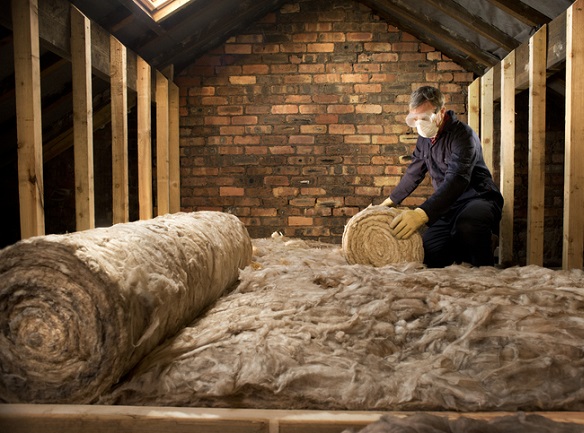How Thick Should Loft Insulation Be?
Reading time: 3 minutes
The benefits of installing loft insulation
According to the Energy Saving Trust, an uninsulated home can see a quarter of its heat lost through the property’s roof alone.
Loft insulation, such as the building materials stocked here at Travis Perkins, can therefore pay for itself many times over once installed into a property.
As well as cutting down on the amount of heat that is lost from a building each year, loft insulation also benefits from creating a more even temperature inside a property. It reduces a property’s carbon dioxide emissions too, so is a great choice when someone is looking to help the environment and reduce their heating bills.
Loft insulation thickness regulations
Current building regulations recommend that loft insulation thickness for domestic properties is measured at a depth of at least 270mm when mineral or glass wool material is used.
These regulations have been in place since 2003, to comply with the requirements of the Building Regulations 2002, Regulation L, so tradespeople carrying out property developments from this date will have been working to these measurements.
However, here is how regulations regarding the recommended thickness of loft insulation have changed over the years:
-
In 2002, the recommended thickness of loft insulation was at least 250mm.
-
In 1995, the recommended thickness of loft insulation was at least 200mm.
-
In the 1990s, the recommended thickness of loft insulation was at least 150mm.
-
In the 1980s, the recommended thickness of loft insulation was at least 100mm.
-
In the 1970s, the recommended thickness of loft insulation was at least 60mm.
-
In the 1960s, the recommended thickness of loft insulation was at least 25mm.
While a property that was built after 2003 will likely have loft insulation of at least 270mm thick then, those in a house constructed in the 1960s could have loft insulation of just 25mm thick if it has not been checked and updated.
Can you have too much loft insulation?
Property owners who find that their current loft insulation measures less than 270mm thick could be encouraged to increase the depth of the material up to the recommended regulations to feel the benefits.
In fact, some new-build homes are now being constructed with loft insulation that is 300mm thick.
Avoid exceeding recommended loft insulation thickness levels too much though, as the amount of insulation used must balance with the levels of airflow and ventilation achieved.
Moisture will be unable to evaporate or have an outlet through adequate ventilation if the flow of air has been compromised by too much loft insulation being installed.
Potential consequences of poor ventilation in a property include condensation, dampness and mould.
Seeking the assistance of a professional tradesperson should help property owners to avoid issues such as these though.
Looking for more advice when tasked with installing loft insulation? Our loft insulation buying guide will help you make the best informed choice every time.




